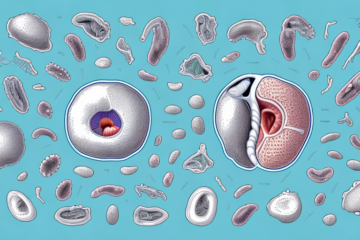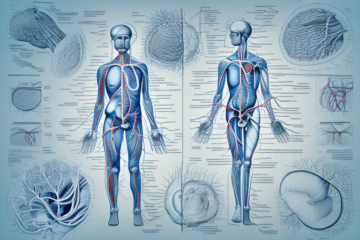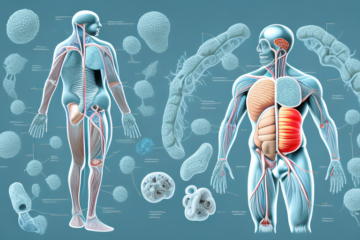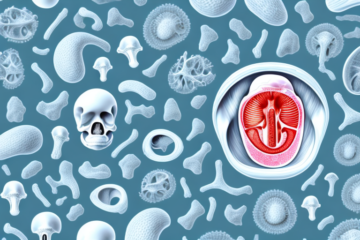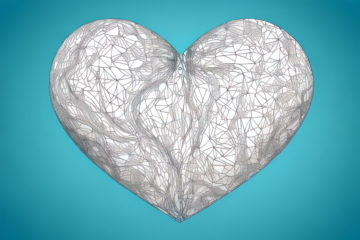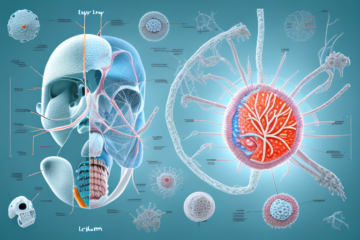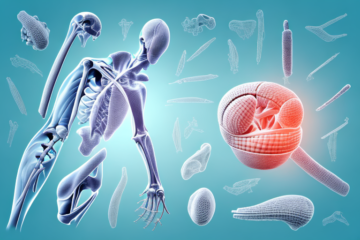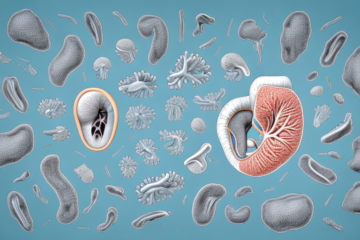The clitoris is an essential part of the female reproductive system, yet is often overlooked or misunderstood. In this article, we will delve into the anatomy, function, and misconceptions surrounding the clitoris. We will also explore different types of stimulation and techniques to try, as well as how to care for your clitoris and maintain sexual health. So, let’s explore this vital aspect of a woman’s sexual experience.
The Importance of Understanding Clitoral Anatomy
For many years, the clitoris was shrouded in mystery, with little investigation into its function and anatomy. It was not until the 1990s that groundbreaking research revealed the clitoris’s full structure, which extends far beyond what is visible to the naked eye. Understanding the intricacies of the clitoris is crucial to female sexual pleasure, as stimulation of the clitoris is often key to achieving orgasm.
One important aspect of clitoral anatomy is the clitoral hood, which is a fold of skin that covers the clitoris. This area is highly sensitive and can be stimulated through direct touch or through the use of a vibrator. It is important to note that not all women have the same size or shape of clitoral hood, and some may require different types of stimulation to achieve orgasm.
Another important aspect of clitoral anatomy is the internal structure of the clitoris, which includes two shafts that extend up to five inches into the body. These shafts are surrounded by erectile tissue, which can become engorged with blood during sexual arousal. Understanding this internal structure can help women and their partners better target and stimulate the clitoris for maximum pleasure.
What is the Clitoris and Where is it Located?
The clitoris is a highly sensitive organ located at the front of the vulva, above the opening of the vagina. It is typically pea-sized and covered by a small, protective hood of skin called the clitoral hood. The clitoris extends inside the body and branches out into two legs that are referred to as the crura. The clitoris is also connected to the labia and the urethra.
Despite being a small organ, the clitoris has over 8,000 nerve endings, making it one of the most sensitive parts of the female body. It is also the only organ in the human body that exists solely for pleasure. The clitoris can become erect when stimulated, similar to the way a penis does, and can lead to orgasm.
Unfortunately, the clitoris has been largely ignored in medical research and education, leading to a lack of understanding and awareness about its importance in female sexual pleasure. However, there are now efforts to change this, with more attention being given to the clitoris and its role in sexual health and pleasure.
The Role of the Clitoris in Female Sexual Response
The clitoris plays a crucial role in female sexual response. It is a highly sensitive organ that, when stimulated, can produce intense pleasure and lead to orgasm. The clitoris has thousands of nerve endings that make it one of the most sensitive parts of the female body. When sexually stimulated, blood flow to the clitoris increases, causing it to become erect and more sensitive to touch.
Interestingly, the clitoris is the only organ in the human body that exists solely for pleasure. Unlike the penis, which has both reproductive and sexual functions, the clitoris serves no other purpose than to provide sexual pleasure to the female body. This fact highlights the importance of prioritizing female pleasure and the need to destigmatize discussions around female sexuality.
It is also worth noting that the size and location of the clitoris can vary greatly among individuals. Some women may have a larger clitoris that is more easily stimulated, while others may have a smaller, less prominent clitoris. Understanding and exploring one’s own body is key to experiencing sexual pleasure and satisfaction.
How Does the Clitoris Work During Sexual Stimulation?
Different women prefer different types of clitoral stimulation, whether through touch, vibration, or other means. Still, the basic physiological process remains the same. As a woman becomes sexually aroused, the clitoris becomes engorged with blood, causing it to become more prominent and sensitive. Continued stimulation of the clitoris can lead to orgasm, an intense sensation of pleasure and release.
It is important to note that the clitoris is not just a small external organ, but actually extends internally, with two legs or “crura” that can be stimulated through penetration. This can lead to a more intense and satisfying orgasm for some women. Additionally, some women may experience multiple orgasms through continued clitoral stimulation.
However, it is also important to remember that every woman’s body is different and may respond differently to stimulation. Communication with sexual partners and exploring one’s own body can help to discover what type of clitoral stimulation works best for each individual.
Types of Clitoral Stimulation and Techniques to Try
There are many different ways to stimulate the clitoris, including using fingers, oral sex, vibrators, and other toys. One popular technique is called the “grinding” method, whereby the woman rubs the clitoris against her partner’s pubic bone. Another common technique that can be incorporated into sex is using a vibrator on the clitoris. Experimenting with different techniques and finding what works best for you can lead to heightened pleasure and more intense orgasms.
It’s important to note that every woman’s clitoris is unique and may respond differently to various types of stimulation. Some women may prefer direct stimulation, while others may prefer indirect stimulation. Additionally, the clitoris is not the only erogenous zone in the genital area, and exploring other areas such as the G-spot or the labia can also lead to increased pleasure. Communication with your partner and exploring your own body can help you discover what feels best for you.
Common Misconceptions About the Clitoris
Despite increased awareness and research, many misconceptions still surround the clitoris. For example, many people believe that the clitoris is only a small bump, when in reality, it is much more complex and far-reaching. Additionally, many people believe that vaginal penetration alone can lead to orgasm, when clitoral stimulation is often necessary for most women to achieve orgasm.
Another common misconception about the clitoris is that it is only present in people assigned female at birth. However, research has shown that the clitoris also exists in people assigned male at birth, although it may be less visible. This highlights the importance of inclusive sex education and understanding that pleasure and sexual anatomy are not limited to one gender.
The Evolutionary Purpose of the Clitoris
The clitoris has no apparent reproductive function, leading many researchers to question its purpose. Some suggest that it evolved to function solely for pleasure, rather than reproduction. Others argue that the clitoris may play a role in female mate selection and sexual competition.
Recent studies have also suggested that the clitoris may have a role in promoting female bonding and social cohesion. In some primate species, females engage in genital grooming, which is thought to strengthen social bonds. The clitoris may play a similar role in humans, as it is highly sensitive and can be stimulated during sexual activity or even non-sexual touch.
Furthermore, the clitoris is not just a small external organ, but also extends internally, with two shafts and bulbs that surround the vaginal canal. This internal structure may play a role in enhancing sexual pleasure and orgasm for women. However, the complexity of the clitoris is often overlooked in medical education and research, leading to a lack of understanding and treatment of clitoral-related issues such as pain or dysfunction.
Medical Conditions Related to the Clitoris
Several medical conditions can affect the clitoris, including clitoral adhesions, which cause the clitoral hood to fuse with the clitoris, and clitorodynia, which refers to pain surrounding the clitoris. It is essential to see a healthcare provider if you experience any pain, discomfort, or abnormalities surrounding the clitoris.
Another medical condition related to the clitoris is clitoral hypertrophy, which is a rare condition where the clitoris becomes enlarged. This can be caused by hormonal imbalances or certain medications. In some cases, surgery may be necessary to reduce the size of the clitoris. It is important to discuss any concerns about the size or appearance of the clitoris with a healthcare provider.
How to Care for Your Clitoris and Maintain Sexual Health
Maintaining sexual health is important for overall health and well-being. Regular check-ups with your healthcare provider can help detect and treat any issues related to the clitoris. Practicing safe sex, including using barrier methods such as condoms, and avoiding harsh chemicals and irritants can help keep your clitoris healthy and protected.
In addition to these measures, there are also specific exercises and techniques that can help improve clitoral health and function. Kegel exercises, for example, can strengthen the pelvic floor muscles and increase blood flow to the clitoris, leading to improved sexual sensation and orgasm. Massaging the clitoris with a water-based lubricant can also help increase blood flow and sensitivity.
It’s also important to prioritize self-exploration and communication with sexual partners. Understanding your own body and what feels good can help you communicate your needs and desires to your partner, leading to more satisfying sexual experiences. Additionally, open and honest communication about sexual health and any concerns or issues can help prevent and address any potential problems related to the clitoris.
The Connection Between the Clitoris and Female Orgasm
The clitoris is often key to female orgasm, and the intensity of clitoral stimulation can affect the intensity of orgasm. Some women may also experience multiple orgasms through clitoral stimulation. Understanding the connection between the clitoris and female orgasm can help women achieve greater sexual satisfaction and fulfillment.
It is important to note that the clitoris is not just a small external organ, but actually extends internally and has many nerve endings. This means that different types of clitoral stimulation, such as direct or indirect, can lead to different sensations and levels of pleasure. Additionally, some women may find that combining clitoral stimulation with other forms of sexual stimulation, such as vaginal or anal, can enhance their overall sexual experience.
The Relationship Between the G-Spot and the Clitoris
The G-Spot, often referred to as the “female prostate,” is an erogenous area located inside the vagina that can produce intense pleasure when stimulated. Some researchers believe that the G-Spot is connected to the clitoris and that stimulation of the clitoris can indirectly stimulate the G-Spot. Additionally, some women may experience heightened pleasure through simultaneous stimulation of the clitoris and G-Spot.
However, it is important to note that not all women may experience pleasure from G-Spot stimulation, and some may not even have a G-Spot. It is also important to communicate with your partner and explore what feels good for you individually, as every person’s body is unique and may respond differently to stimulation.
Exploring Different Sensations with the Clitoris
Experimenting with different types of stimulation and techniques can lead to new and exciting sensations. Incorporating different types of touch, pressure, and movements can heighten pleasure and lead to more intense orgasms. It’s essential to communicate with your partner and explore your own body to discover what feels best for you.
Some techniques to try include using different types of lubrication, such as warming or cooling lubricants, or incorporating sex toys like vibrators or clitoral stimulators. Additionally, exploring different positions, such as lying on your stomach or sitting upright, can also provide new sensations. Remember to always listen to your body and stop if anything feels uncomfortable or painful.
The Future of Research on the Clitoris
Despite increased awareness and research surrounding the clitoris, there is still much to learn about this essential aspect of female sexual anatomy. Ongoing research will help us better understand the clitoris, how it works, and ways to enhance sexual pleasure and satisfaction for women.
In conclusion, the clitoris is a complex and fascinating organ that plays a vital role in female sexual pleasure and satisfaction. Understanding the anatomy and function of the clitoris, exploring different types of stimulation and techniques, and maintaining sexual health can all contribute to a happy and fulfilling sex life.
Recent studies have also shown that the clitoris may have a role in female reproductive health beyond sexual pleasure. It has been suggested that the clitoris may play a role in the release of hormones that are important for ovulation and fertility. Further research in this area could have significant implications for women’s reproductive health and fertility treatments.


